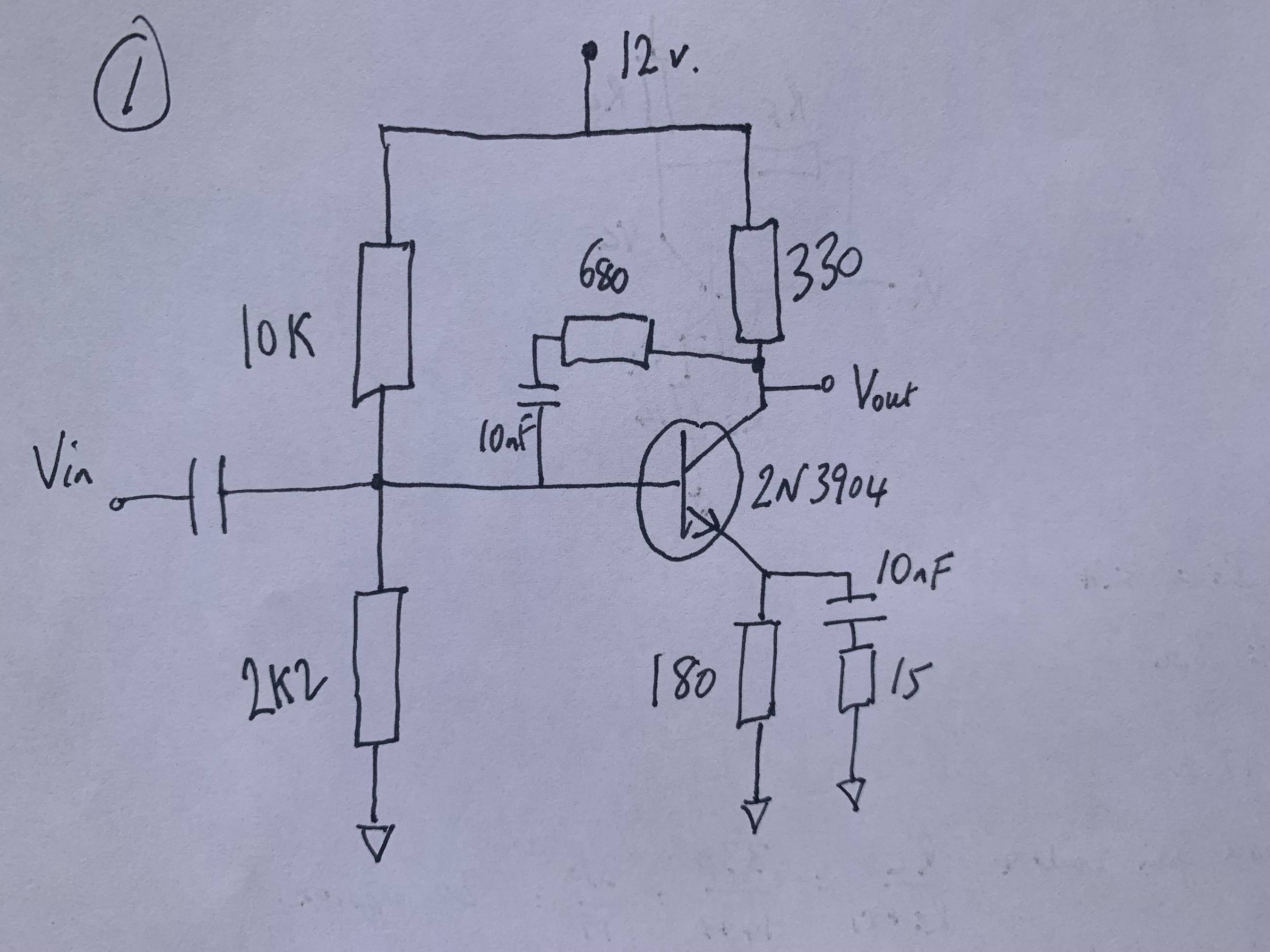I made this 3 transistor Rf amp which works well at 10 MHz and has 50 ohm output impedance, a gain of 8.2 (18.3 dB) and quiescent curent of 28.6 mA. It consists of a common emitter stage followed by 2 emitter follower stages. (Credit: Nick the vic M0NTV)
My question concerns only the first stage and, in particular the 680 Ohm feedback shunt resistor between collector and base.
At 10 MHz the reactance of a 10 nF capacitor is <<1 Ohm so, as far as the signal is concerned, all capacitors can be replaced by a short. This results in having 2 emitter resistors in parallel (180 & 15) which make us 14 Ohms together. To this I have added the internal emitter resistance of re = 3 Ohms (25 mV divided by the 8 mA emitter current). This gives the simplified circuit:
If I'm correct, but for the feedback resistor the gain would be approx 330/17 i.e. 19.4 or 25.9 dB (Rl divided by RE total). So the effect of introducing the feedback resistor is to halve the gain.
I've tried doing the calculation considering the effect of a small dV increase in Vb to work out the gain Av = dVc/dVb but end up going round in circles. Going to LTSpice might give the answer but would add nothing to my understanding.
Can someone help me out?





